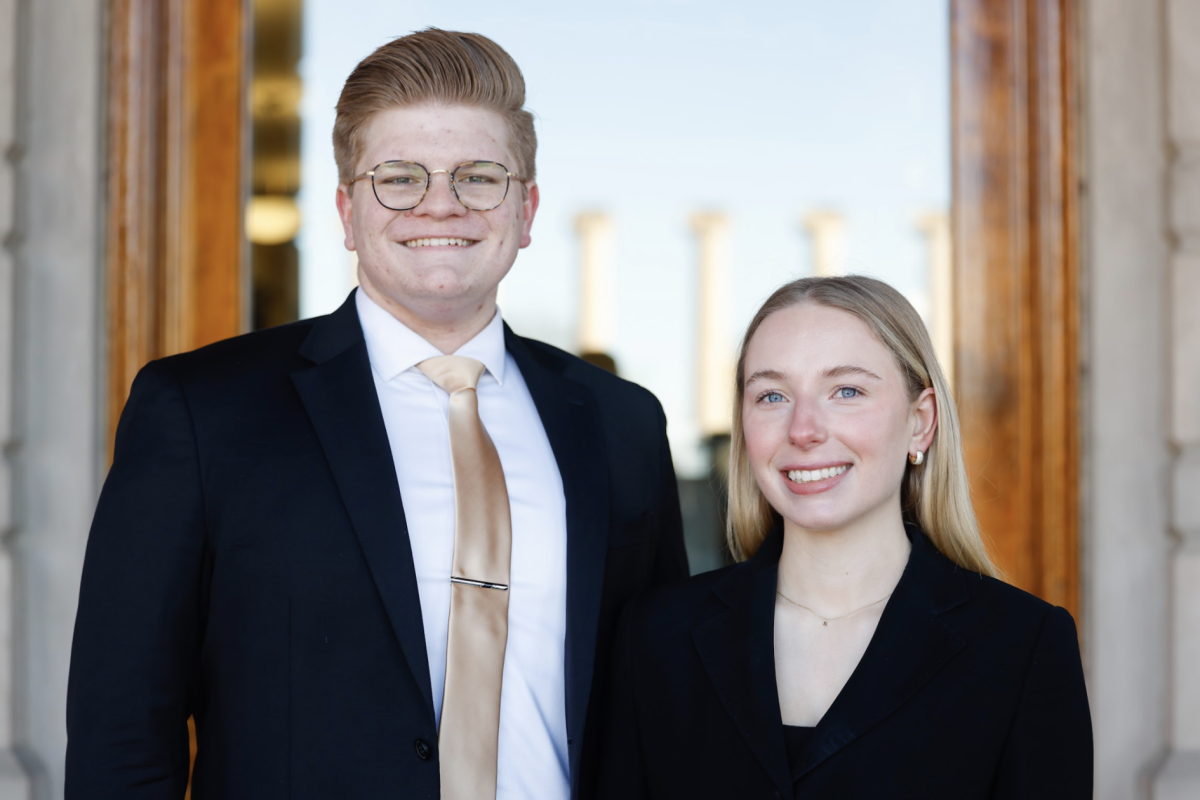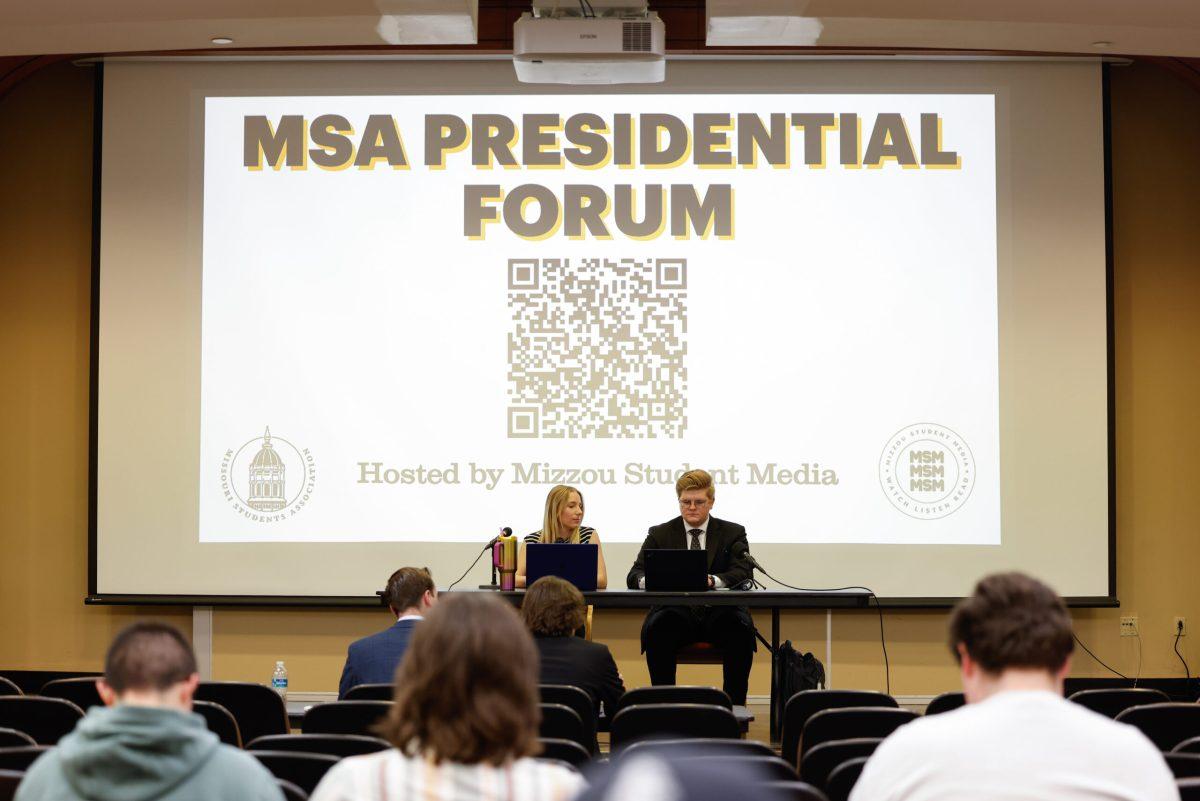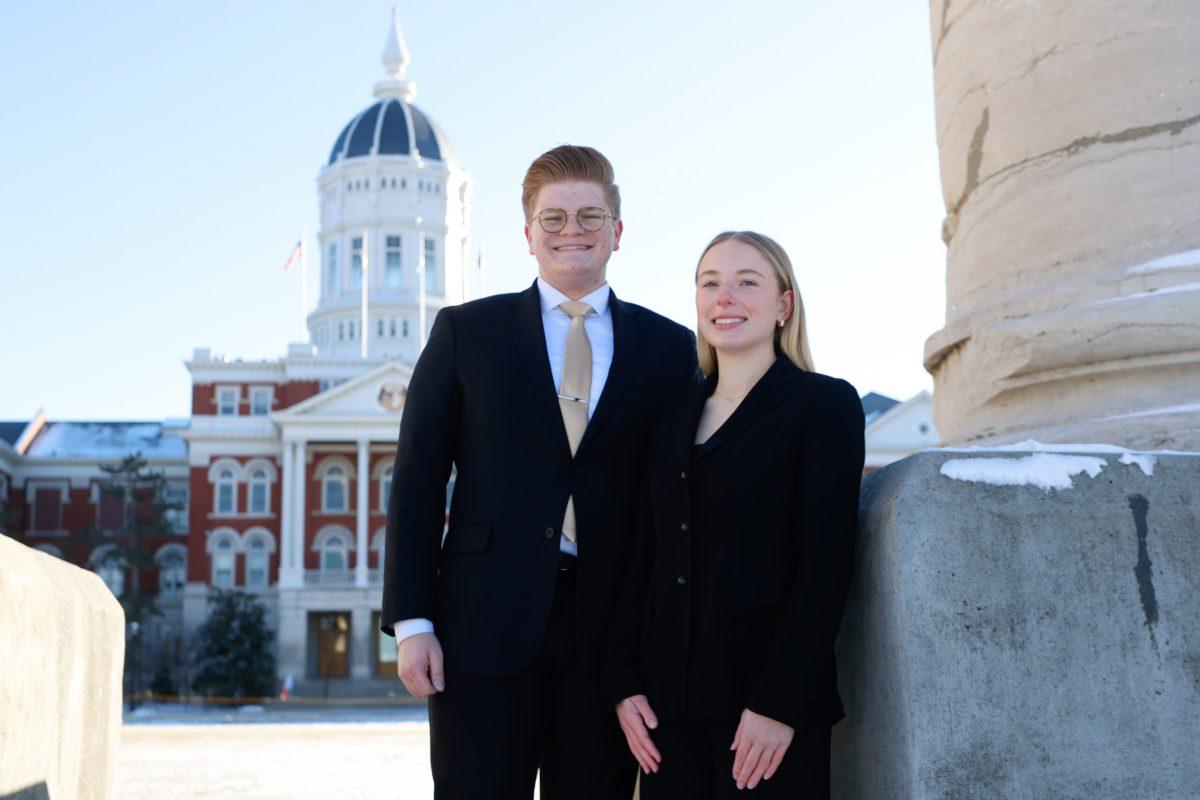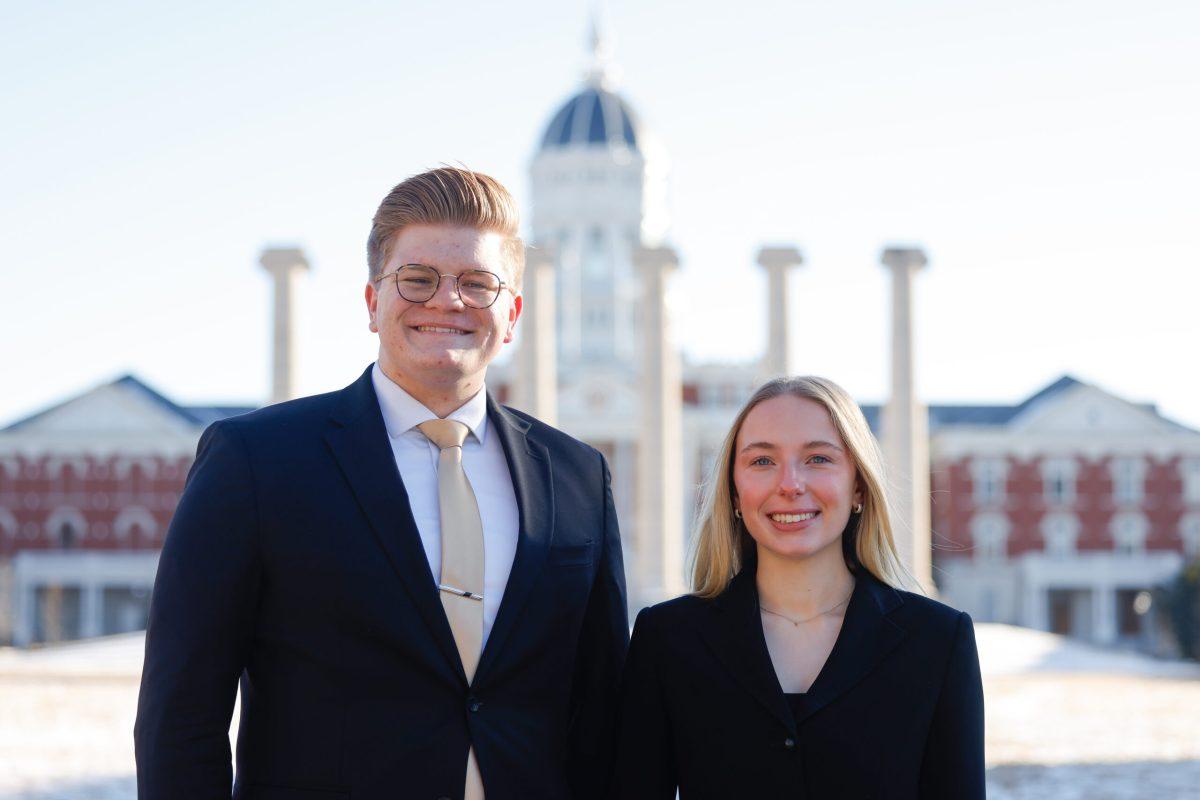MU students have persistently protested injustice since the university’s founding in 1839, but three parallel movements stand out in particular.
The first movement of documented racial activism at MU began in 1958 when several Black students protested discrimination in local restaurants. The Congress of Racial Equality chapter created at that time staged several sit-ins at restaurants who refused to serve Black customers. This direct action resulted in the integration of many restaurants in downtown Columbia.
The 1960s brought another wave of racial activism at MU. The Legion of Black Collegians was founded in 1968 by members of the Alpha Phi Alpha fraternity. The group was formed after “confrontations between white and black students at a football game when, as part of Mizzou tradition, a Confederate flag was waved while the marching band played,” according to the St. Louis Post-Dispatch. The LBC is still active at MU today and is the only Black student government in the nation.
Michael Middleton, one of the first Black law graduates and the first Black law professor at MU, personally delivered 15 demands to MU on behalf of LBC in 1969 while he was still a student.
The 15 demands included an increase in Black faculty, allocation of funding for a new Black Culture House and the removal of the Confederate Rock from any university or public property. The rock was placed at the corner of South Ninth Street and Conley Avenue, also known as Speaker’s Circle, in 1935. It was donated to the City of Columbia by the United Daughters of the Confederacy with a plaque that reads, “to honor the valor and patriotism of confederate soldiers of Boone County.”
The rock was moved to the Boone County Courthouse in 1975; Black students said it was “a symbol of continuing racism on campus.” It rested outside the courthouse until September of 2015 when a petition with hundreds of signatures called for its removal. It is now at the Centralia Battlefield historic site, the site of the Centralia massacre where 23 unarmed Union soldiers were murdered in 1864.
The next movement against racial injustice at MU came in the wake of Michael Brown’s murder in Ferguson, Mo. on Aug. 9, 2014, when protests erupted throughout Missouri. In response, three Black students founded MU for Mike Brown and organized several protests on campus. These protests set the stage for the wave of activism that swept across MU just over one year later.
Then-Vice President of the Missouri Students Association Brenda Smith Lezama said, “there has not been a time since Ferguson that activism hasn’t been at the forefront of our university. It never stopped after Ferguson.”
“The death of Michael Brown, along with reaction to it at Mizzou, occurred not in a vacuum but instead in a time of growing attention to police brutality, policing of minority communities and white supremacism more generally,” wrote MU Law Professor Ben Trachtenberg in 2018.
In the fall of 2015, protests in response to a series of racist incidents on campus garnered national attention. The protests ultimately led to the resignation of then UM System President Tim Wolfe.
The protests began in September of 2015 when then MSA President Payton Head publicly posted about his experiences with racism on campus. The post went viral, attracting attention around the country and at MU. Then-Chancellor R. Bowen Loftin issued a statement calling the “recent incidents of bias and discrimination … totally unacceptable.”
In late September and early October of 2015, graduate and undergraduate students organized a series of “Racism Lives Here” protests.
In response to continuing racist incidents and the ensuing protests, Loftin released a plan for diversity training for incoming freshmen. This plan received mixed feedback from students. In response, Jonathan Butler, a then-graduate student, wrote an open letter to Loftin in The Maneater.
“You have students, especially those doing grassroots organizing … who have purposefully, strategically and consistently brought these concerns to the attention of your administration … To not acknowledge the protestors, organizers, students, faculty and staff that have taken of their time and energy to hold you and your administration accountable is very disrespectful and paints a false image of the work that your administration has been doing on this campus,” Butler wrote.
On Oct.10, 2015, protestors blocked Wolfe’s car during the Homecoming parade. They stopped his car, but received no immediate response. Wolfe’s car tapped one of the protesters in an attempt to continue in the parade. The incident created outrage that ended 15 minutes after the confrontation began when police dispersed the protesters.
Concerned Student 1950, the group responsible for the protest, issued a list of demands to MU on Oct. 20. The list of eight demands included an apology and resignation from Wolfe, an increase in the percentage of Black faculty, a plan for increased retention of marginalized students and increased funding for social justice centers and mental health counseling.
Some students also called for the removal of the Thomas Jefferson statue and tombstone which sit on the east side of Francis Quadrangle. The statue was not removed.
Concerned Student 1950 met with Wolfe on Oct. 26, at which time he refused to meet their demands.
Wolfe was “dismissive” of Black students’ concerns, prompting Butler to launch a hunger strike on Nov. 2. He was to continue the strike until “either Tim Wolfe is removed from office or until [his] internal organs fail and [his] life is lost.”
During the hunger strike, Concerned Student 1950 created a petition for Wolfe’s removal. The petition received over 7,000 signatures from students and faculty.
Five days into the strike, Wolfe issued a statement apologizing for his conduct at the Homecoming parade, the first acknowledgement he made of the incident. The statement was met with skepticism from Butler and other members of Concerned Student 1950.
Students began a camp out in support of Butler’s protest. They set up tents by Traditions Plaza “to push for the removal of Tim Wolfe as UM System’s president, and also in support of Jonathan Butler and his endeavors to generate change,” one attendee told the Columbia Missourian.
On Nov. 7, Black football players announced they would not participate in “any football related activities until President Tim Wolfe resigns or is removed due to his negligence toward marginalized students’ experiences.”
Other players and members of the coaching staff stood behind the boycott, supporting the demands of Concerned Student 1950.
Following the boycott, MSA released a statement calling on the UM System Board of Curators to remove Wolfe, saying he has “enabled a culture of racism” at MU.
Deans from nine colleges wrote a letter to Wolfe and the UM Board of Curators expressing their “deep concern about the multitude of crises on our flagship campus,” and ultimately calling for Loftin’s removal. This letter came one week after the English Department held a 26-0-2 vote of no confidence in Loftin. The Department of Romance Languages and Literature also held a vote of no confidence.
Wolfe resigned as UM System President on Nov. 9, one week after the start of Butler’s hunger strike.
Wolfe’s decision was to resign or cost the university over $1 million. When the athletes began their boycott, they were about one week away from a football game against Brigham Young University. If they forfeited the game, it would have broken a contract between the two schools.
Loftin resigned from his position as chancellor hours after Wolfe but did not leave the university. He instead moved to a research coordination role that, two years later, became the subject of an audit report. The report led by State Auditor Nicole Galloway alleged that he was earning 32% more than other administrative research faculty and that his position was in a field for which MU doesn’t have a strategic initiative. He has since retired.
Within days, the UM System Board of Curators named Middleton, co-founder of LBC, interim UM System President. He was stepping into the role to which he delivered demands on racial equality 46 years prior.
Middleton said in comparing the protests of the 1960s and ‘70s to 2015, “It is all part of the same movement … So it is not dramatically different. These students were doing exactly the same things that we were doing. It is almost from the playbook.”
Middleton was interim President until 2016 when the Board of Curators hired Mun Choi for the permanent position. In 2020, the Board consolidated Choi’s power by combining the UM System President and MU Chancellor positions. He now presides over the four system campuses as well as being the Chancellor of the Columbia campus.
Five years after the 2015 protests, and in the wake of George Floyd’s death, Black Lives Matter protests sprang up around the country. Throughout the summer, several groups organized protests on campus and in the city of Columbia.
Since the summer, students have been calling for the removal of the statue of Thomas Jefferson on Francis Quadrangle. A petition with over 3,000 signatures calls for the statue’s removal and in response, a counter-petition was created in favor of keeping the statue on campus. The MU Black Faculty and Staff Organization issued a statement to Choi supporting the removal of the statue.
Despite the call from faculty, staff and students, Choi decided not to remove the statue. “We learn from history. We contextualize historical figures with complex legacies. We don’t remove history,” he said.
Choi “recommended that university faculty and students explore how MU can contextualize this historical figure,” in a press release from MU. The university has since installed lights, security cameras and a $20,000 acrylic case around his marker in response to vandalism concerns.
Over the summer, students used social media as a platform to share their experiences at MU. Using #BlackatMizzou on Twitter, students and alumni have shared incidents of racism they have experienced on campus.
The hashtag drew the attention of administrators. Vice Chancellor Bill Stackman tweeted, “Other campus leaders and I are listening to and learning from these students’ experiences. We want to help the healing process and make a better future for our Tigers.”
Choi responded to the series of tweets in a statement: “I call upon each one of us to take the stand to confront discrimination when it happens and to provide care and compassion to those who have suffered from it.”
In early August, a student group #StillConcerned released a series of demands, some paralleling the demands from 2015. Among the seven demands is an apology and resignation from Choi, the creation of a student-led board of racial inclusion, the reversal of the combination of the UM System President and MU Chancellor positions and the removal of the Thomas Jefferson statue.
The Maneater published an editorial on Aug. 25 standing with the members of #StillConcerned, and pushing for their demands to be met. This includes calling for the removal of Choi, whom the editorial board called a “dictatorial leader.”
Activism has also spread to student-athletes much like it did in 2015. On Sept. 2, a newly formed student group, the Mizzou Black Student-Athlete Association, organized a march to “promote unity against the injustices that continue in the nation.” Hundreds of students attended the event.
In a letter published on Sept. 14, 15 journalism professors expressed their “disappointment” in a series of Choi’s actions. This includes his discouragement of dissent and call out of two journalism professors in an interview, according to the letter.
In addition to racial activism, the COVID-19 pandemic has added to the stream of dissent against the MU administration. A recently formed coalition of groups called the MO Coalition for COVID Safety issued a series of demands to President Choi and the UM System Board of Curators on Sept. 14. Among the demands is moving to fully online instruction, removal of the Jefferson statue, removal of Choi from all leadership positions, increased COVID-19 testing and transparency and the unmerging of UM System President and MU Chancellor positions.
“If you are a leader, a senior leader at the university, and you don’t agree with the philosophy of the university or you don’t trust the motivations of the senior leaders, then I think you should leave,” Choi said in the Columbia Tribune.
Choi’s statement, faculty said, is “furthering a culture where faculty and staff were specifically targeted for disagreeing with Choi’s decisions,” according to the Missourian.
Choi has also had his fair share of dissent from students who have criticized his handling of COVID-19 and racism on campus. Choi blocked several students on Twitter, including student journalists. After the threat of a lawsuit, Choi unblocked those students. MU Spokesperson Christian Basi said, “he decided to reverse his actions because the university does not need the distraction caused by this matter.”
Stackman is aware of the eerily similar circumstances of 2015 and 2020 surrounding racial tension. The addition of COVID-19 concerns has made the MU administration wary of dissent on both counts. In a meeting with faculty in June, Stackman said, “widespread protests could impact enrollment, financially impacting our division … 2015 was devastating. And so the last thing that our president and our curators want to risk is something so damaging like 2015.”
_As part of its commitment to highlighting organizations fighting for racial justice, the Maneater is encouraging readers to donate to the Solutions Not Punishment Collaborative, “a black trans and queer led organization that builds safety within our community, investing in our collective embodied leadership and building political power.” Donate at: https://www.paypal.com/donate/?cmd=_s-xclick&hosted_button_id=EPH7USQP5L9RG&source=url._
_Edited by Joy Mazur | [email protected]_













